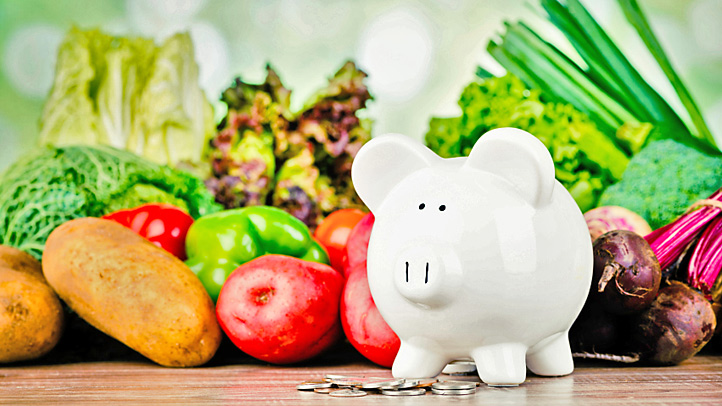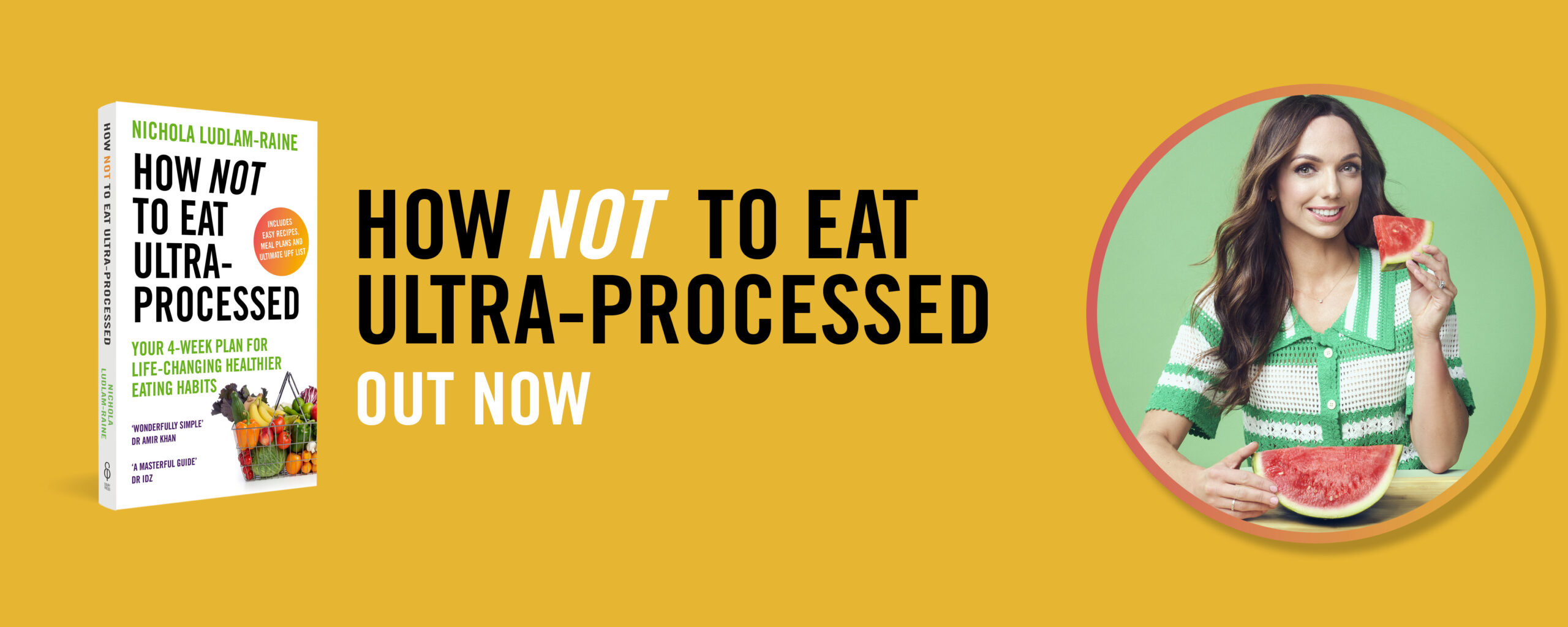
Following on from last week’s blog post all about “How to Navigate your Supermarket”, here’s another article that I wrote for Superfood Magazine all about ‘when to splash the cash’ and save money in the supermarket; answering the aged-old question of ‘when should you spend more on food’:
- Should you buy organic?
- Should you stock up on so called “superfoods”?
- Are the luxury ranges really better than the basics?
So read on if you want to find out my thoughts!
- Organic vs. Non Organic
Organic farming involves severely restricting the use of artificial chemical fertilisers and pesticides, relying instead on developing a healthy, fertile soil and growing a mixture of crops. Genetically Modified (GM) crops and ingredients, as well as irradiation are banned under organic standards.
Regarding food, you may have heard of the ‘Dirty Dozen’ and ‘Clean 15’ before, but if not let me explain: The dirty dozen and the clean 15 refer respectively to the fruits and vegetables that are the most and least contaminated by pesticide use according to the U.S. based Environmental Working Group.
At the top of the dirty dozen list are strawberries, spinach, nectarines, apples, peaches, pears, cherries, grapes, celery, tomatoes, sweet bell peppers and apples; meaning buyers, across the pond at least, may want to consider buying the ‘organic’ equivalents. And at the top of the clean 15 list are onions, sweet corn, pineapples, avocado and cabbage; meaning if you were buying organic food selectively then you could stick to the regular versions of these foods.
In the UK, the Pesticide Action Network have produced their own list of the ‘best and worst foods for pesticide residues’ and at the top of the ‘worst list’ are oranges, lemons and limes, strawberries, pears, grapes, cherries, peaches and nectarines, pineapple, apricots and banana. Washing these fruits and vegetables is therefore a must, especially if the organic equivalents aren’t bought.
At the top of the ‘best list’ (i.e. lowest prevalence of pesticide residues) are: Beetroot, cauliflower, corn on the cob, figs, mushrooms, onions, rhubarb, swede, turnip, peas, spring onions, asparagus, radish, avocados and broccoli; meaning if you were buying organic food selectively then you could stick to the regular versions of these foods.
HOWEVER..
Should we take these lists on our next shop though? Perhaps not. There is currently limited evidence to indicate that organic foods may contain lower levels of pesticides than food produced by conventional methods and there isn’t enough scientific evidence to say that organic food is more nutritious than non-organic food or that there are any health benefits to eating organic foods.
Whilst some foods grown organically may have more nutrients, some may have the same, or even less, than those grown on non-organic farms. Many factors can affect the nutritional content of food (organic and non-organic) such as: soil quality, growing conditions, as well as harvesting methods and timing.
For example, although organically farmed fruit and vegetables may be higher in phosphorous, vitamin C and phytonutrients, they may be lower in nitrogen and protein. These differences though are likely to be small/none significant when considering overall dietary intake.
Take-home message: The main thing to consider when buying food isn’t is that your fruit and vegetables are organic or not, it’s that you’ve got some fruit and veg in your basket at all! And if you’re at all concerned about pesticide exposure make sure to wash all fruit and vegetables, organic or not, thoroughly under running cold water before eating or cooking.

- “Superfood” vs. Non “Superfood”
“Superfoods” are known as foods that are packed with vitamins, minerals and phytonutrients which are vital for health. There isn’t actually a legal definition for what a “superfood” is though, so really any food that provides nutrients is a superfood!
In my opinion we should be celebrating more everyday superfoods; healthy foods that are either easier to get hold of and/or are cheaper, and here are my top ten:
- Swap almonds for brazil nuts. Brazil nuts have 153 times the amount of selenium which is an important antioxidant to keep us healthy and they’re also cheaper too.
- Swap blueberries for blackberries. The English blackberry is not only more locally sourced, but they contain double the amount of vitamin C than the more commonly promoted blueberry.
- Swap salmon for sardines. Sardines are not only less than half the price of salmon but they contain the same amount of heart healthy omega 3 as well as three times as much vitamin B12, vital for energy levels.
- Swap chia seeds for sesame seeds. Sesame seeds have almost double the amount of iron and are higher in calcium, magnesium and vitamin B6. They are also over 75% cheaper than chia seeds too!
- Swap kale for broccoli. Broccoli contains more vitamin C and potassium than kale, essential for heart function and it’s also cheaper too!
- Swap goji berries for raspberries. Both berries contain similar amounts of fibre but fresh raspberries contain nearly 90% less sugar!
- Swap quinoa for lentils. Lentils have more protein and fibre than quinoa meaning you could be left feeling fuller for longer!
- Swap coconut oil for olive oil. Olive oil is much high in monounsaturated fatty acids (MUFA) which is the healthiest type of fat for your health. Just make sure to read the label before you buy to work out if the olive oil is better for salad dressings (darker bottle usually) or for cooking (lighter in colour usually).
- Swap mixed nuts for chickpeas. Roasted chickpeas make a great snack. They contain similar amounts of protein and fibre compared to nuts but have only 1/3 of the calories, they’re also a lot cheaper too!
- Swap wheatgrass for spinach. One wheatgrass shot doesn’t count towards your 5 a day but a handful of spinach does; spinach is also a lot cheaper too!
Take-home message: Focus on eating more ‘wholefoods’ and worry less about eating ‘trendy superfoods’; your bank balance will thank you for it!

- Luxury vs. Basics Ranges
When it comes to comparing ‘luxury’ or ‘branded’ products to the supermarket ‘basic’ ranges the packaging of the former clearly wins. However we all know that it’s what’s inside the product that counts; you would never judge a book by its cover would you?
When comparing products, especially when deciding on where to spend your hard earned cash, I would advise that you go straight to the ingredients list, which is always listed in order of the contents i.e. the main ingredient of the product will be listed first. The ingredient list tells you what exactly is in the product that you’re going to eat and subsequently what nutrients you’ll be getting. A simple example of how to use the ingredients list in practice is that if sugar is either the first or second ingredient in a product, for example in a cereal bar, then you know that you are paying for mainly ‘empty calories’ i.e. calories and not much else. That’s not to say that we should be avoiding sugar altogether, but it may help you to decide which product to buy; one containing mainly sugar or one containing healthier whole foods.
To help you to decide whether or not you should ‘splash your cash’ on the luxury or branded version of a product, I’ve taken a look at the ingredients list and nutritional profiles of ten commonly bought items to come up with the following recommendations:
WORTH THE LUXURY PRICE TAG (in my opinion):
- Cereal Bars: One of the main ingredients in most ‘basic’ cereal bars is sugar or glucose syrup. The more ‘luxury’ bars however tend to be based around oats, dried fruit and nuts. Check out the Jordan’s cereal bars and the Nakd bars for luxury inspiration.
- Cottage Cheese: The ingredients list may be similar but ‘luxury’ cottage is much less watery and and as result tastes creamier. When foods taste good we get more satisfaction from them!
- Bolognese Pasta Sauce: The luxury ranges really are worth the extra money as they contain more vegetables and less water than the basic equivalents.
- Jam: Fruit should always be the main ingredient in jam and most luxury ranges abide by this ‘rule’. Most basic ranges have glucose-fructose syrup as the main ingredient.
STICK TO THE BASIC RANGES (in my opinion):
- Fresh or Frozen Fruit: When is comes to the fresh or frozen kind, fruit is fruit. They may be different shapes and sizes but all are equally as nutritious so stick the basic ranges and save your cash. When it comes to dried fruit always check the ingredients list as brands will vary as to whether or not they add cane sugar or not.
- Vegetables: As with fruit, vegetables are vegetables and if you’re looking to reduce food waste, save money and reduce cooking time then buy frozen. Frozen vegetables are just as nutritious as fresh.
- Pasta: There is no difference between luxury white pasta and basic white pasta. It’s both made from Durum wheat. And if you fancy an alternative to dried pasta then check out the fresh variety (found in the chiller section!).
- Rice: Rice is rice (!). And if you want the slower releasing kind (low GI) then choose basmati.
- Oats: Similar to rice, another slow release carb that doesn’t need to be ‘luxury’ is oats. Basic porridge oats taste just as delicious and contain just as much heart healthy soluble fibre as their luxury equivalents.
- Coleslaw: Believe it or not, most ‘basic range’ coleslaw’s contain more nutrient rich cabbage than their luxury equivalents.
Take-home message: Look at the ingredients list, not the packaging when buying foods!

I really hope this blog post helps to save you money too!!

You have inspired me to swap some of my ‘superfoods’ for the cheaper alternatives, especially as ripe blackberries are growing everywhere (and free!) at the moment.
Aw I’m so glad! Enjoy Helen! xx